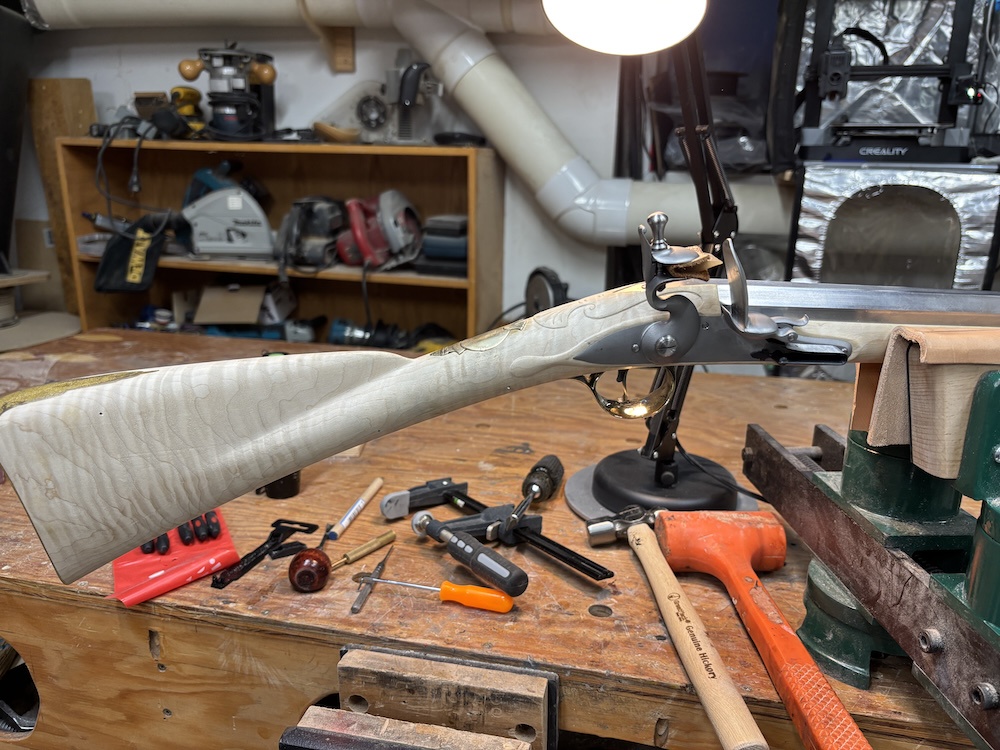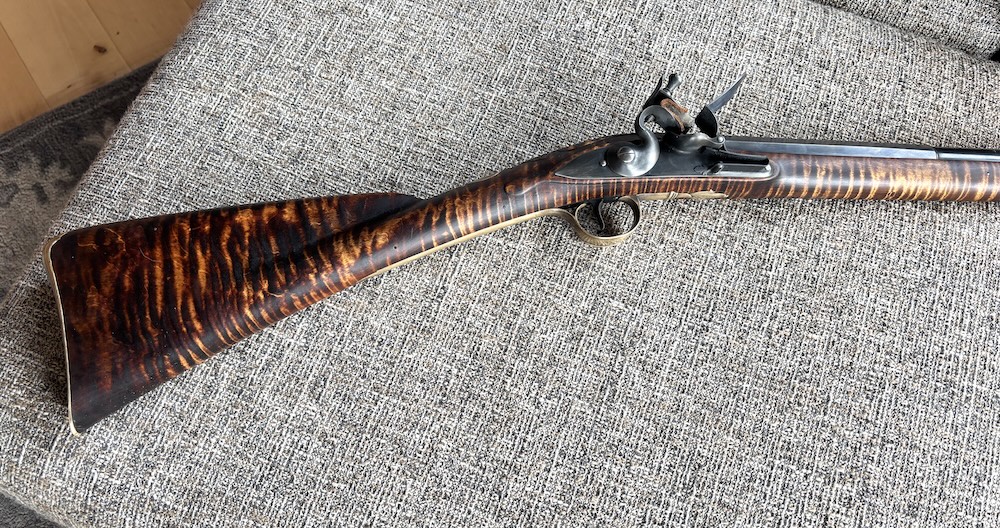If you order a Kibler fowler kit you won't need much more than a small chisel and some sandpaper for the wood, I don't know how finished the metal mounts are and if they still have casting marks but a small file and some sandpaper is all you need to slick them up. Most of the parts on a Kibler are CNC shaped to be mostly finished.
For the more involved project like a Chambers kit, it sounds like you have everything you need, a shop would be nice but a lot of these guns were built on a kitchen table by folk who improvised and came up with what they needed.
I wrote this up for the same question a few years ago and saved it;
A little more on M/L building, there are a bunch of options available;
First would be what we call an "assembly" kit like a TC, Lyman, Traditions or CVA. The kits are mostly done and take very little fitting and work to put them together. Most of the work would be applying finish to wood and metal.
A Kibler kit is next, very precise stock shaping parts and stock inletting, some parts drop in, some have to be fitted with a little wood removal. The early Kibler kits had cast parts that had to have a final finish one the metal, most are CNC shaped now and don't require much filing and fitting. All of the holes are drilled in the stock but you do have to drill through the lugs and install pins. For someone who has done a CVA or Traditions kit, this would be a good next step. You will end up with a perfectly shaped historically correct rifle.
Jim Kibler has extensive videos on how to put together his kits, follow them and you can't go wrong unless you think you are smarter than Mr. Jim, think have a better way of doing things and really muck things up. I call this complicating a simple task to the point of failure.
If you want an actual period rifle or fowler but doubt your skills you can buy a gun in the white, no finish on wood or metal but already assembled.
Third would be a parts kit with a pre-carved stock. These have all the parts but lots of fitting, drilling, final inletting and some stock shaping is involved. Figure some wood and metal working skills and at least a hundred hours to complete this kit. The pre-carves I have bought have been flawed and took a bunch of work to correct the bad shaping errors. I have not put together a Chambers kit and only hear good stuff about them.
Parts kits are available from Chambers, Track of the Wolf, Pecatonica and several other places with Chambers being the best.
http://www.flintlocks.com/
There are lots of videos on putting together a parts kit on You Yube, each step, watch a few to help make your decision.
Lastly is a scratch build I have made two of these, took me two years on the first, one year on the second and I suspect 6 months on the next. I kinda' know what I am doing now. Scratch builds are easier than pre-carved kit builds because you control how all of the parts fit together and are not dependent on some random duplicator that can be off a mile. I had the barrel inletted and ramrod hole drilled on all of my scratch build kits because as a rookie I didn't trust myself to do the job.













